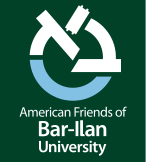Millions of people get sick from bacterial infections contracted during a hospital stay that, in some cases, also cause or contribute to over 100,000 preventable deaths a year. That’s something that Prof. (Emeritus) Aharon Gedanken, Director of the Kanbar Laboratory for Nanomaterials at the Bar-Ilan University Institute of Nanotechnology and Advanced Materials (BINA), aims to eliminate.

Video: Keeping Hospital Patients Safe from Bacteria
Gedanken’s solution: a revolutionary way to coat fabrics and textiles used in a hospital — such as bed sheets, pillow cases, curtains, gowns, pajamas, and towels — with anti-bacterial nanoparticles to counter this deadly phenomenon.
Is this a big business? The European Union certainly thinks so: they are financing Gedanken to the tune of 12 million Euros to lead a four-year program that encompasses 17 textile manufacturers, universities, and government agencies in England, France, Italy, Spain, Russia, Romania, Bulgaria and Poland, all working to commercialize his technique to coat and mass produce his antibacterial fabric. Universities involved in the project are Coventry University in the United Kingdom, and Universitat Polytechnica de Catalunia in Barcelona. According to the terms of the EU grant, the partners meet periodically in person to discuss their progress and plan the next steps.
The program is nearing completion of its first milestone: the building of two large machines that can spray the nanoparticles using ultrasonic waves on fabric up to 50 centimeters in width. The machines are being constructed in France and Russia.
“You can put in this machine anything that can be rolled in it,” Gedanken says. “Polyester, cotton, wool, nylon, polyethylene. It can even go on aluminum foil and supermarket bags.”
Initially selling the idea wasn’t so easy. “I came to many companies and explained to them my technique,” Gedanken recalls. “They claimed to have met 20 people like myself in the last few years with the same claims. But once they put those fabrics in hospital washing machines, all the anti-bacterial properties were removed.”
Gedanken says his method, embedding nanoparticles into the very fibers of the fabric, ensures that the anti-bacterial properties will last up to 70 cycles in industrial hospital washing machines where the temperature is kept at near boiling 92 degrees Celsius.
One of Bar-Ilan’s most respected researchers, Gedanken has been at the University since 1975. During his tenure, Gedanken has been a very busy man: he served as the chemistry department’s chairman from 1982-1985; has published more than 570 scientific papers; and was a visiting scientist at AT&T Bell Laboratories and at the U.S. National Institutes for Health where he focused on spectroscopic research for several years during the 1980s and 1990s. In 2009, he won the Edwards Prize of the Israel Vacuum Society for his research work in nanotechnology.
Prof. Gedanken’s 30-person laboratory at BINA is heading up all of his nano work. In addition to anti-bacterial sheets, he also has grant-funded projects looking into some truly revolutionary products, from creating bio-diesel, cleaning waste and even producing new treatments for acne.
And, after a winter of fevers and coughs, here’s one to look forward to: a technique to help you from catching the flu that works by “tricking” the flu virus into attaching to some of Gedanken’s nanoparticles instead of human cells. Now that’s a Bar-Ilan innovation that’s nothing to sneeze at.


